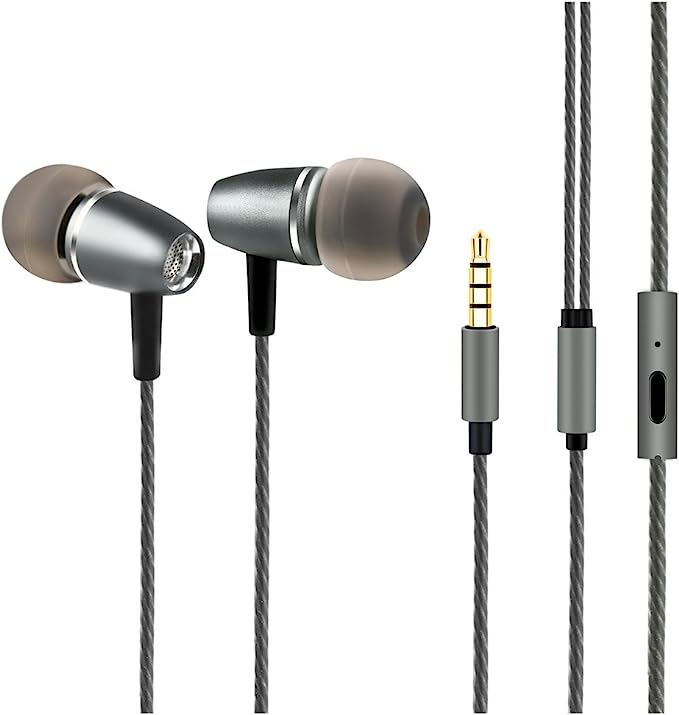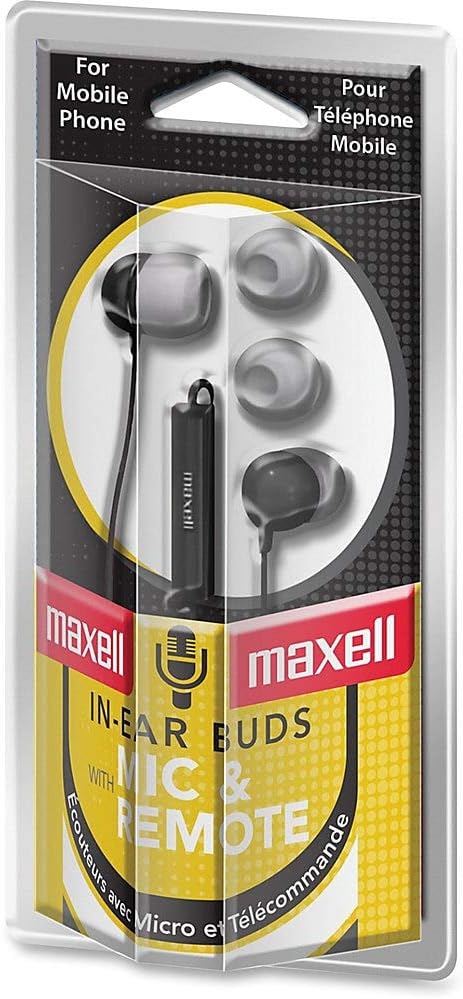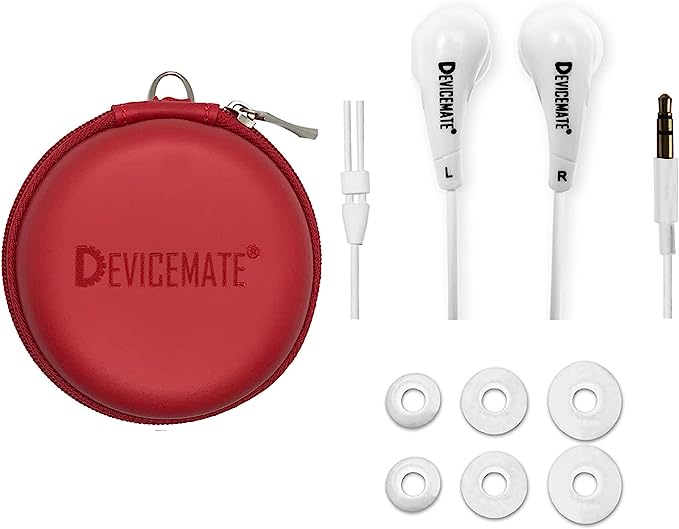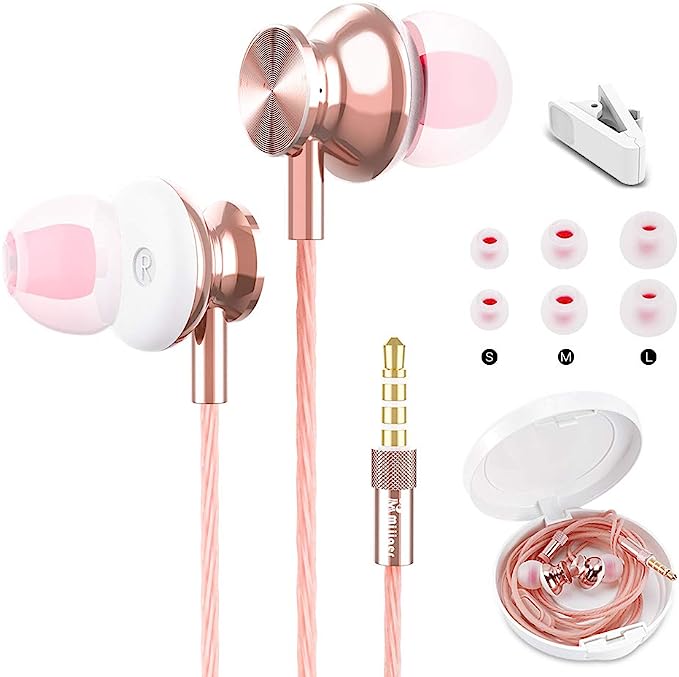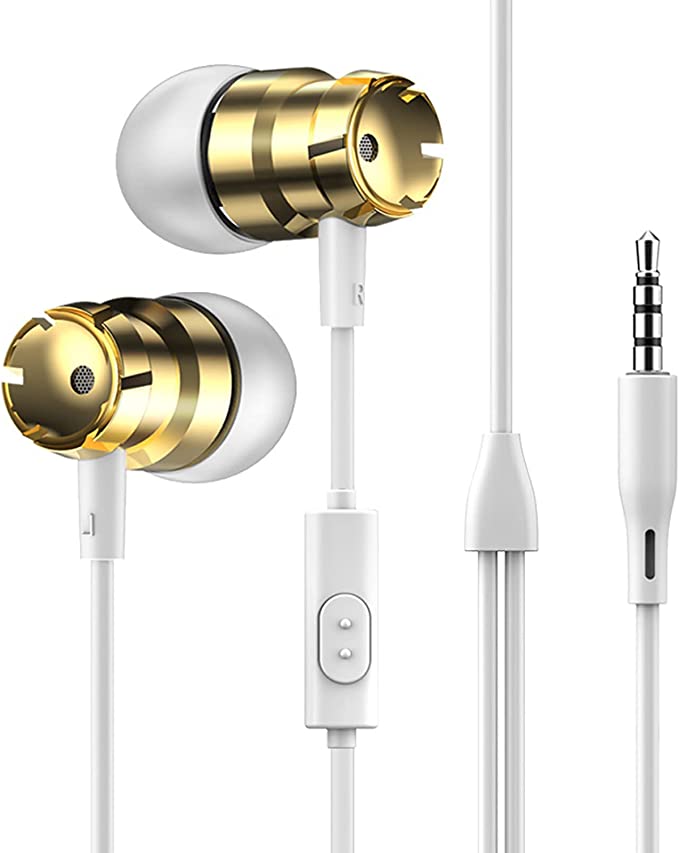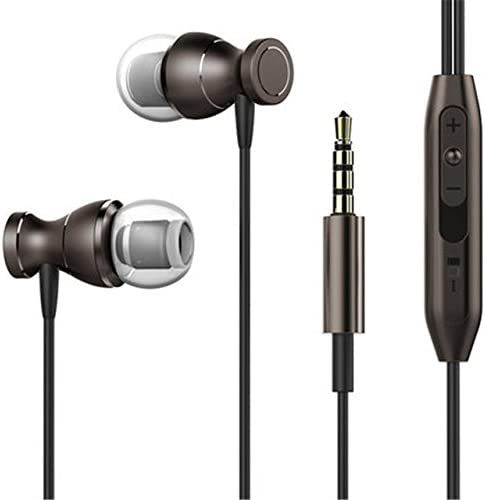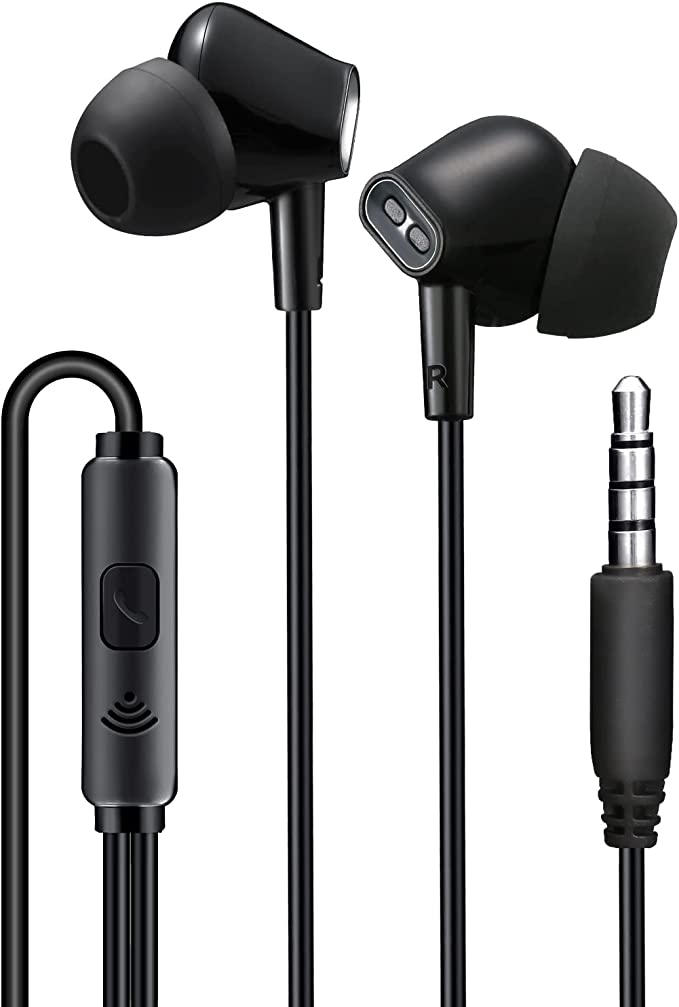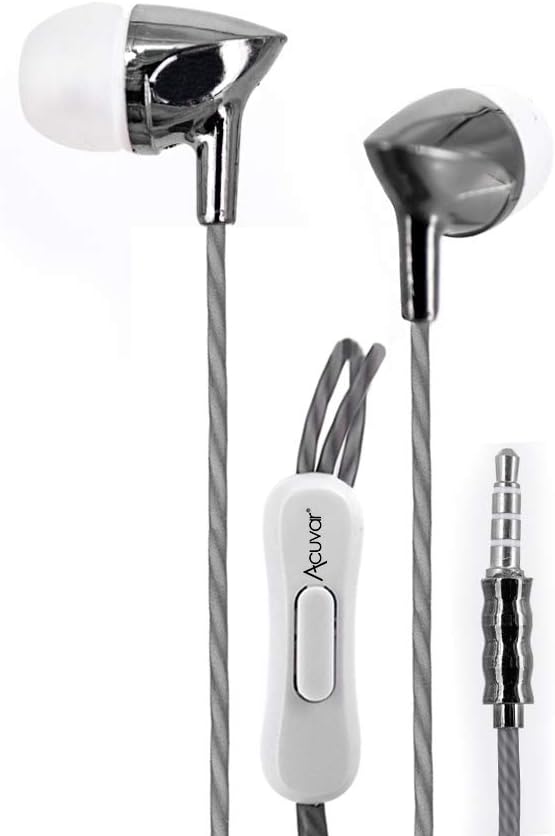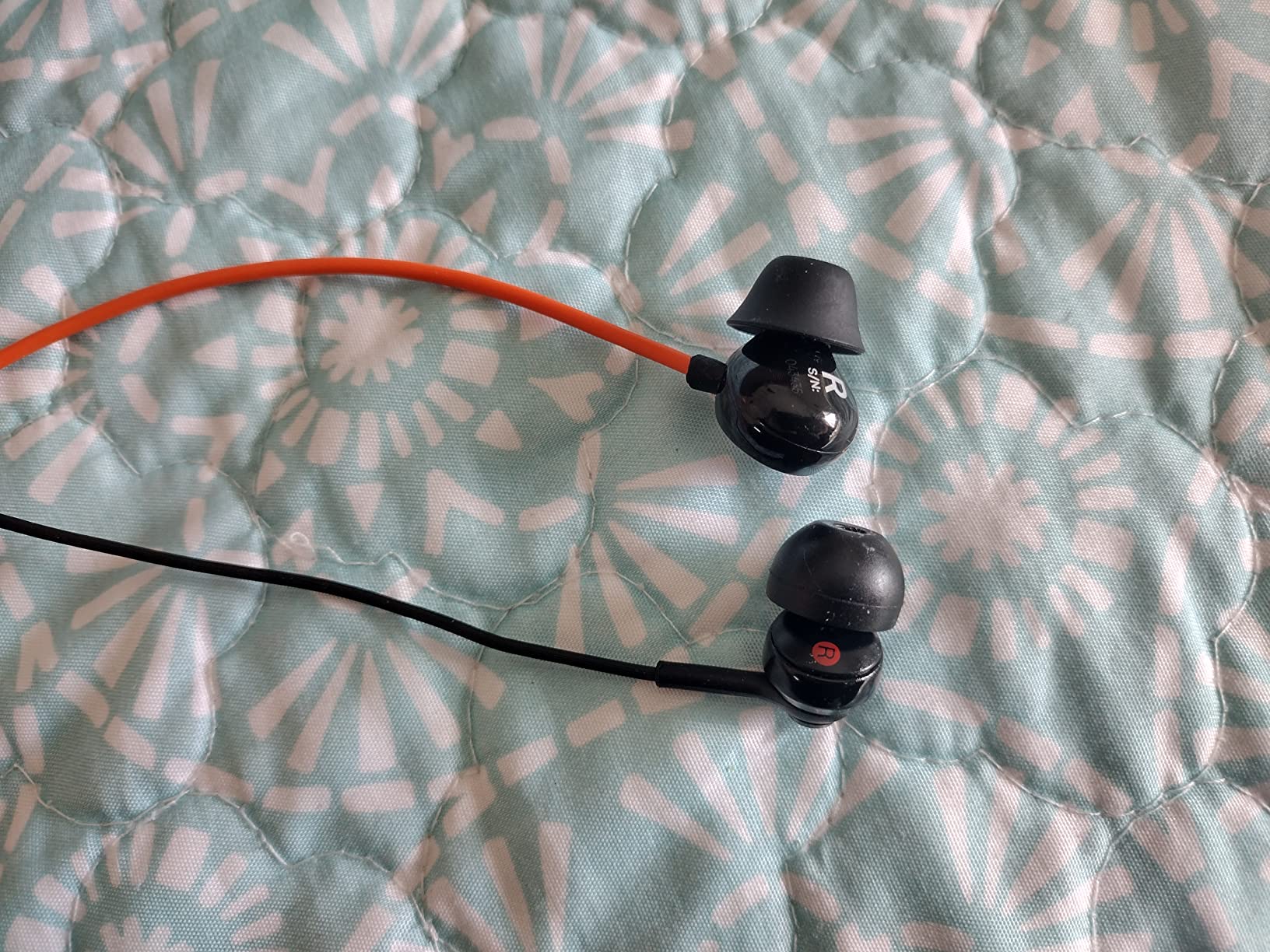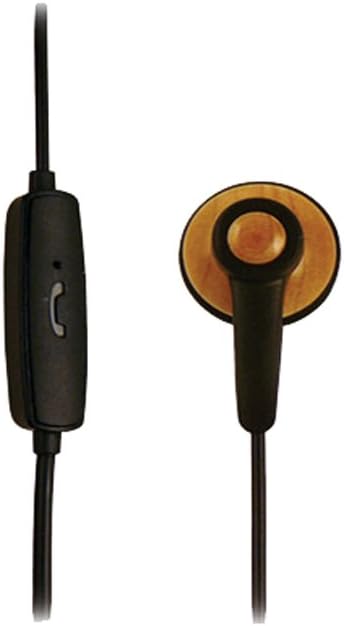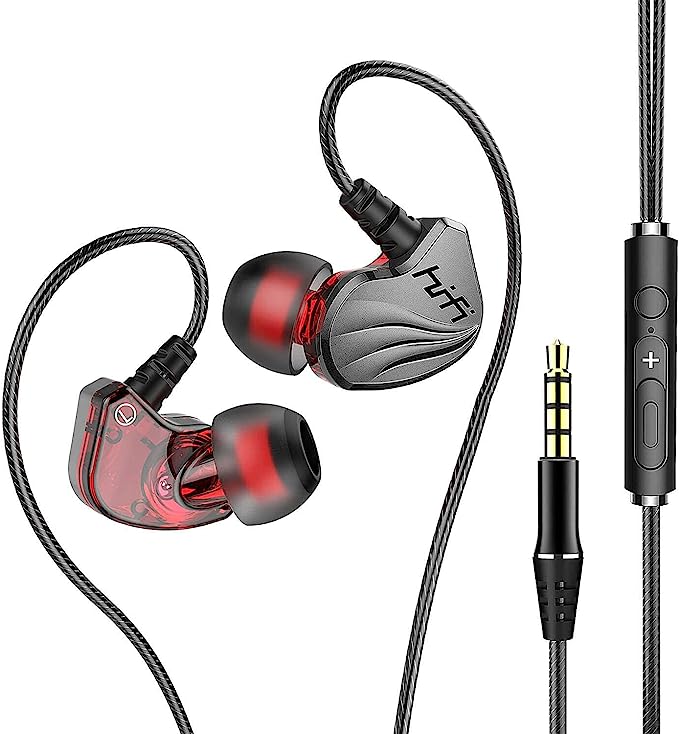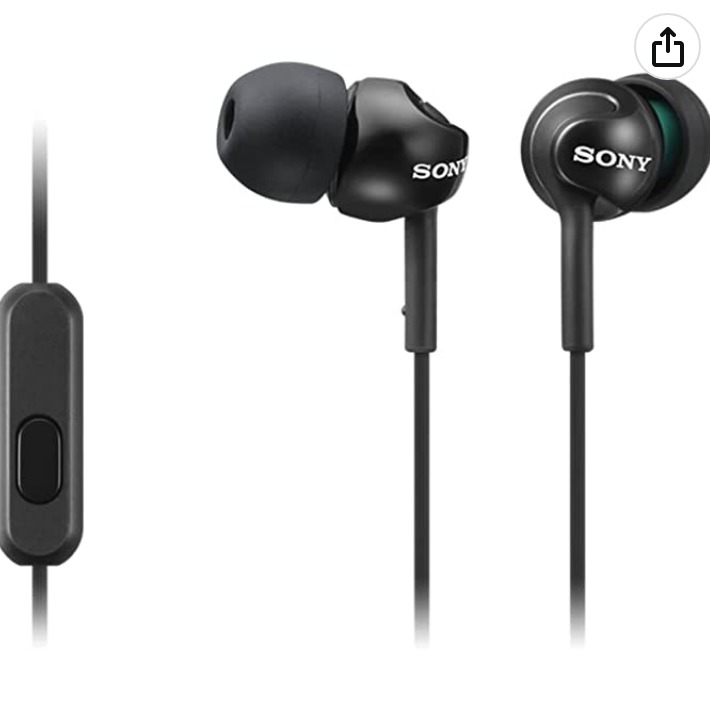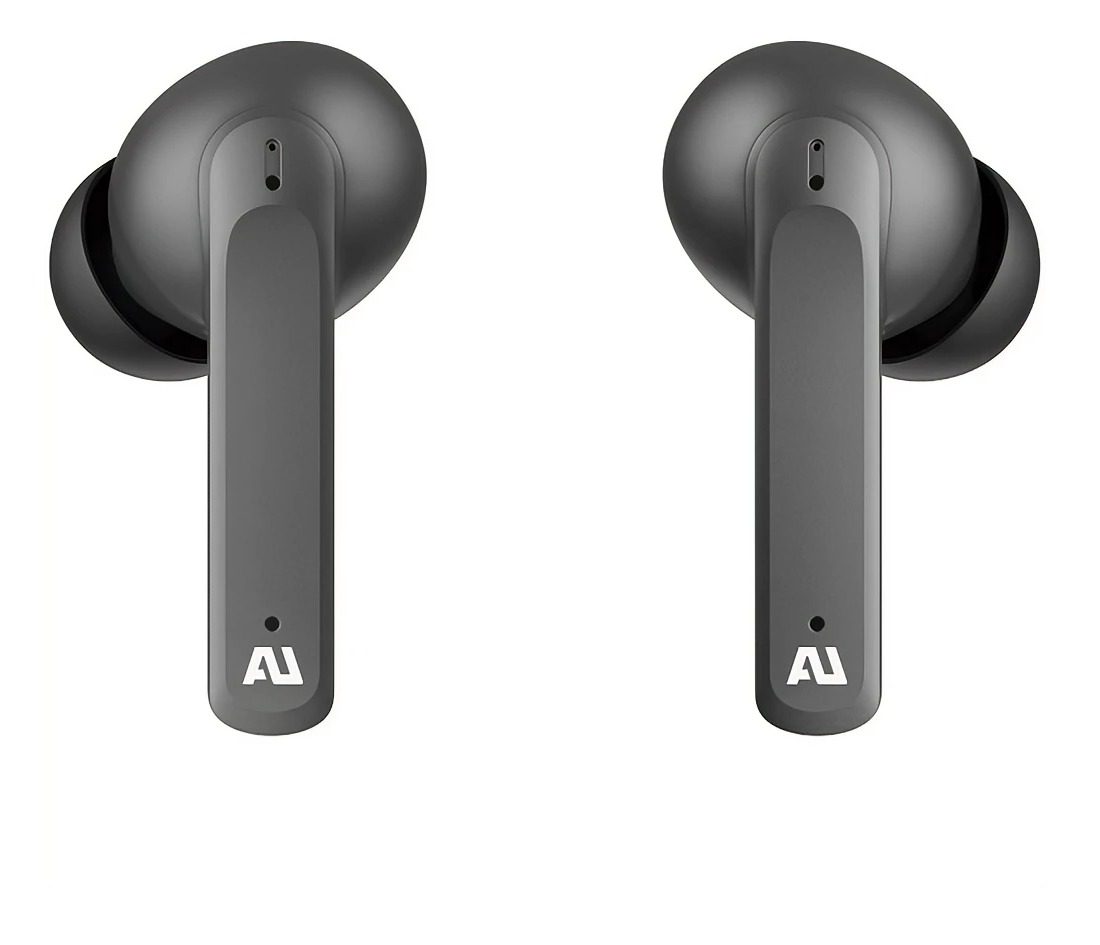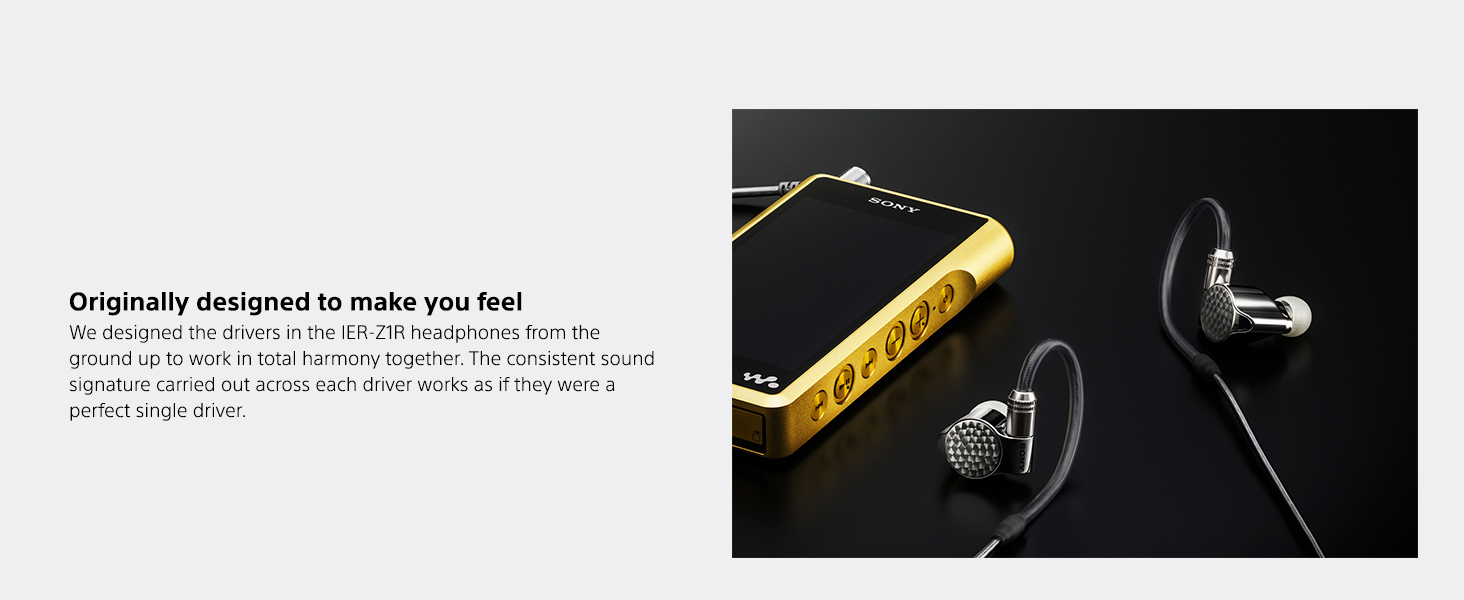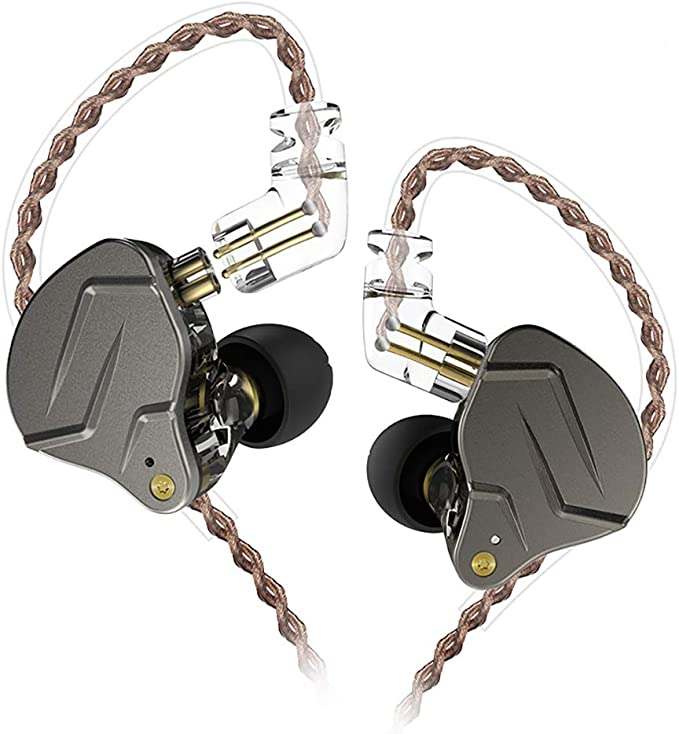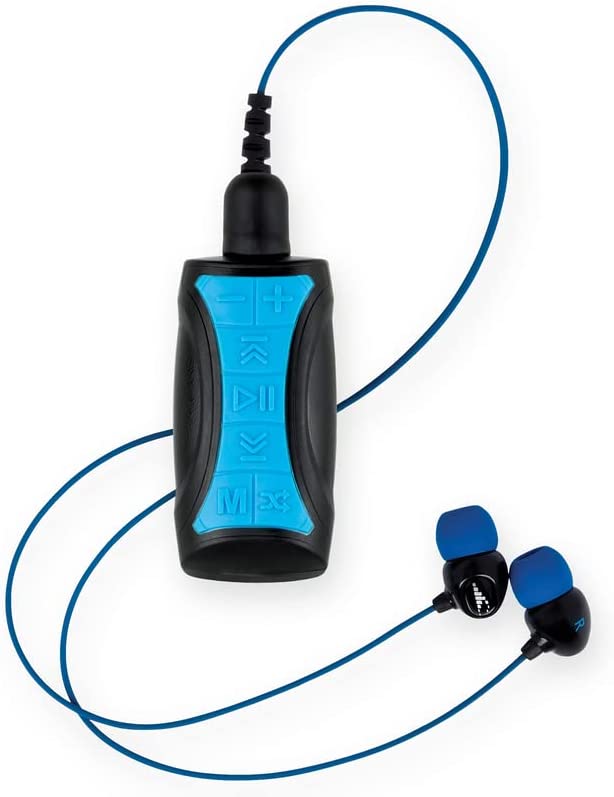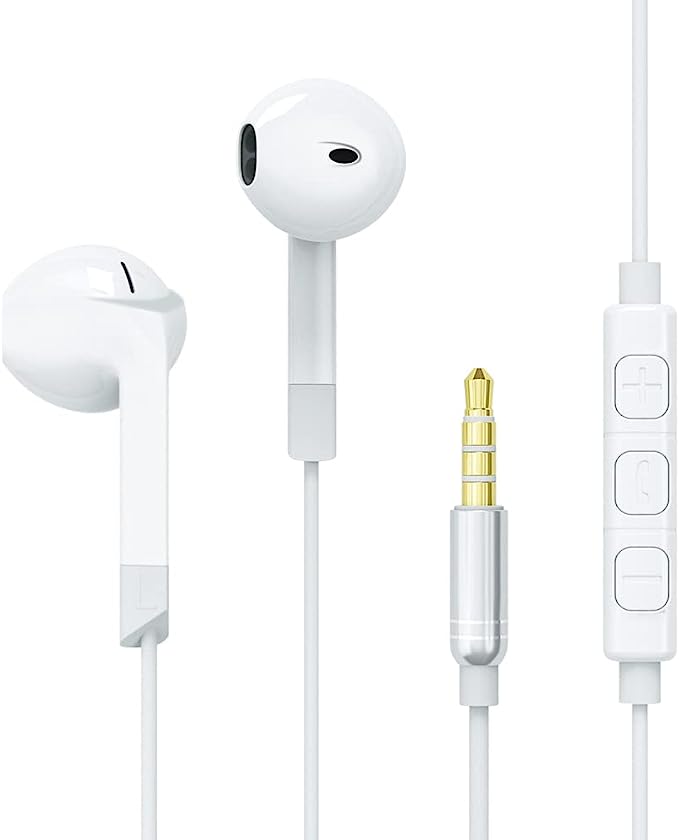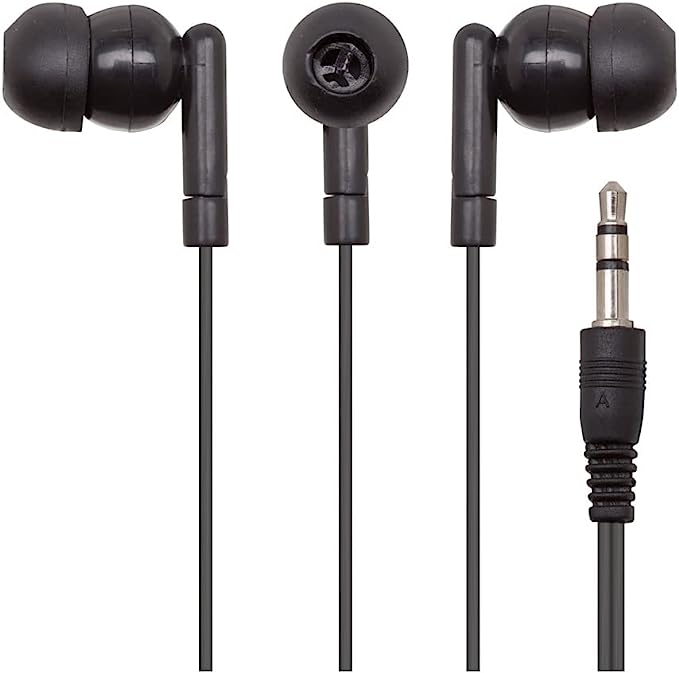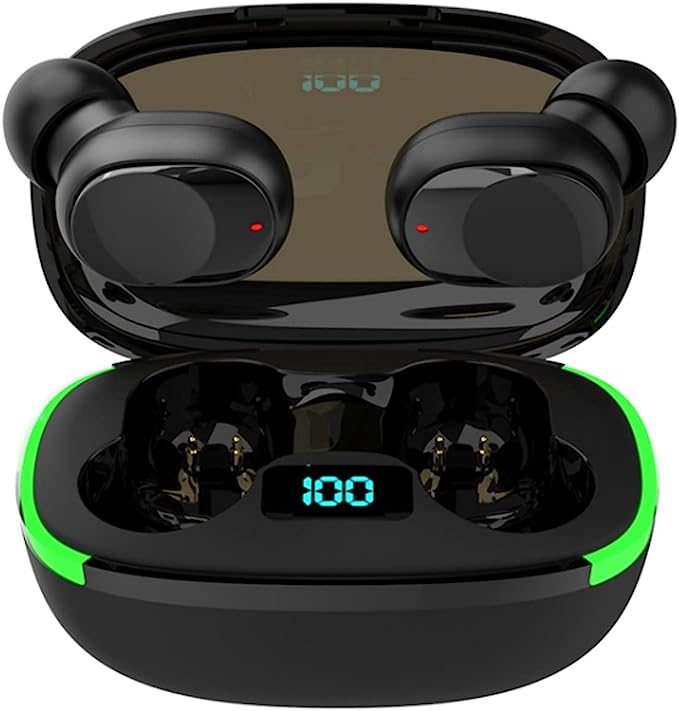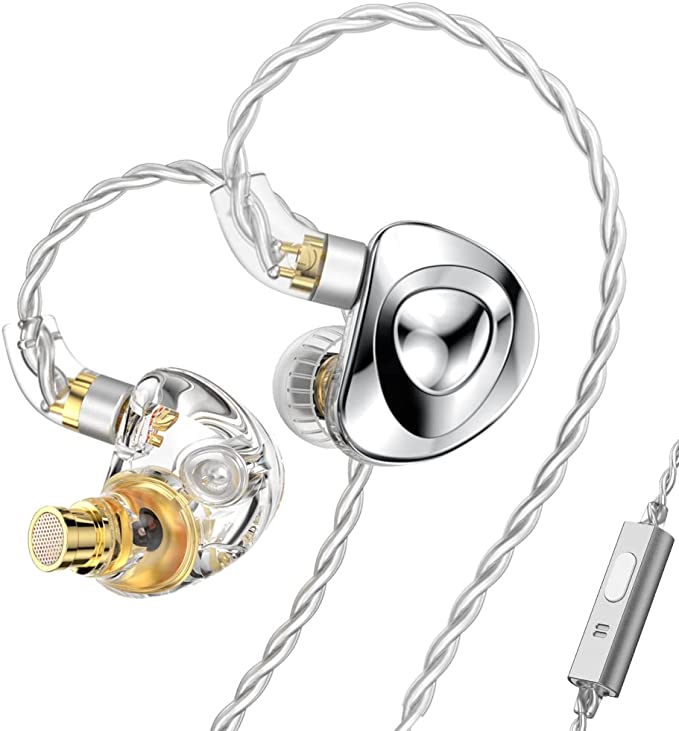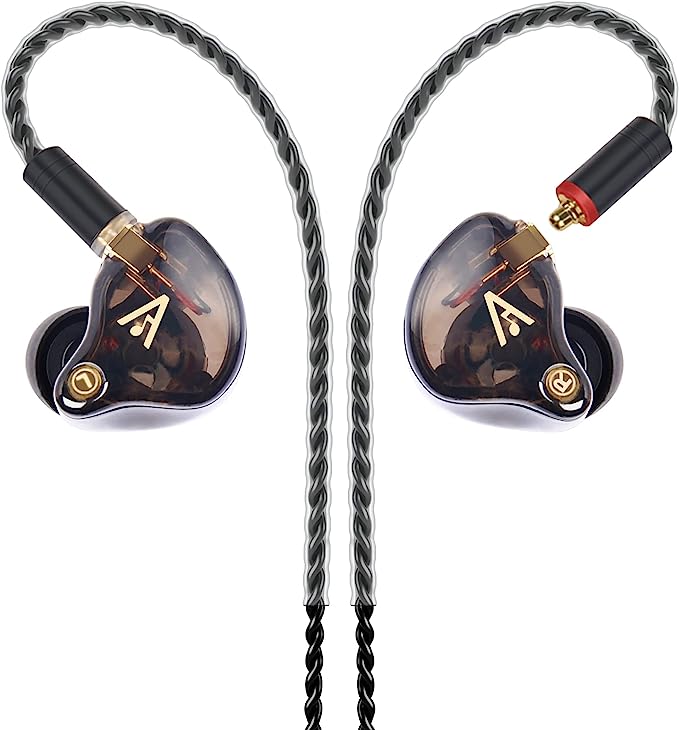Decoding Sound: The Science Behind Generic EP-W001 Soundmax In-Ear Wired Earbuds
Update on Feb. 17, 2025, 9:43 a.m.
The Allure of Inner Sound: Why In-Ear Headphones?
We live in a world saturated with sound. From the rumble of city traffic to the chirping of birds, our ears are constantly bombarded with auditory information. But sometimes, we crave a more personal, focused listening experience. We want to immerse ourselves in music, lose ourselves in a podcast, or simply find a pocket of quiet in a noisy world. This is where in-ear headphones, also known as earphones or earbuds, come in. Their compact size, portability, and ability to deliver sound directly into the ear canal make them an incredibly popular choice for personal audio.

Sound Demystified: The Physics of Auditory Experience
Before we explore the intricacies of in-ear headphones, let’s take a moment to appreciate the fundamental nature of sound itself. Sound is, at its core, vibration. Imagine dropping a pebble into a still pond. Ripples – waves – spread outwards from the point of impact. Sound waves are similar, but instead of water, they travel through a medium like air, water, or even solids.
These waves have two crucial properties that determine how we perceive them:
-
Frequency: This refers to how quickly the wave vibrates back and forth. We measure frequency in Hertz (Hz), which represents cycles per second. A higher frequency means the wave is vibrating faster, and we perceive this as a higher pitch. Think of the high-pitched squeak of a mouse versus the low-pitched rumble of thunder.
-
Amplitude: This describes the intensity of the vibration, or how much the air pressure changes as the wave passes. We perceive amplitude as loudness. A whisper has a low amplitude, while a shout has a high amplitude.
Think of a guitar string. A thin, tightly strung string vibrates quickly (high frequency) and produces a high-pitched note. A thicker, looser string vibrates more slowly (low frequency) and produces a low-pitched note. Plucking the string harder increases the amplitude (loudness) of the sound.

The Human Hearing System: Our Amazing Ears
Our ears are remarkable biological instruments, finely tuned to capture and interpret these vibrations. Sound waves enter the ear canal and cause the eardrum to vibrate. These vibrations are then amplified by tiny bones in the middle ear (the malleus, incus, and stapes) and transmitted to the cochlea, a fluid-filled, snail-shaped structure in the inner ear. Inside the cochlea, thousands of tiny hair cells convert these vibrations into electrical signals that are sent to the brain via the auditory nerve. Our brain then interprets these signals as sound. The human ear is generally capable of hearing frequencies from 20 Hz to 20,000 Hz, though this range can decrease with age and exposure to loud noises.
Inside the Shell: How In-Ear Headphones Create Sound
In-ear headphones, despite their small size, are complex acoustic devices. Let’s break down the key components:
-
The Dynamic Driver: The Heart of the Sound: The vast majority of in-ear headphones, including the Generic EP-W001 Soundmax, use what’s called a dynamic driver. It works on the same principle as a miniature loudspeaker. A small, lightweight diaphragm (a thin, flexible membrane, often made of plastic or mylar) is attached to a coil of wire (the voice coil). This voice coil sits within a magnetic field. When an electrical audio signal passes through the coil, it creates a varying magnetic field that interacts with the permanent magnet, causing the diaphragm to vibrate. These vibrations create the sound waves that travel down your ear canal.
-
Eartips: More Than Just Comfort: Those little silicone (or sometimes foam) tips that come with your earbuds aren’t just for making them fit snugly. They play a crucial role in sound quality and isolation. By creating a seal within your ear canal, eartips perform several vital functions:
- Passive Noise Isolation: They physically block out external sounds, preventing them from interfering with your music. This is different from active noise cancellation, which uses electronic circuitry to generate sound waves that cancel out ambient noise. The Soundmax earbuds rely on passive noise isolation.
- Enhanced Bass Response: A good seal prevents bass frequencies (which have longer wavelengths) from escaping, resulting in a richer, more powerful low-end response.
- Secure Fit: A proper fit ensures the earbuds stay comfortably in place, even during movement.
-
The Housing (Chamber): Shaping the Sound: The small enclosure that houses the driver also plays a role in shaping the sound. Its size, shape, and internal design influence how sound waves resonate and reflect, affecting the overall tonal balance of the headphones.
The Soundmax Advantage: Features Explained
Let’s delve into the specific features of the Generic EP-W001 Soundmax and explore the science behind them.
Noise Isolation: Your Personal Sound Bubble
The Soundmax earbuds, as mentioned earlier, utilize passive noise isolation. This means they rely on the physical barrier created by the eartips and the earbud housing to block out external sounds. Think of it like plugging your ears with your fingers – you’re reducing the amount of sound that reaches your eardrums. The effectiveness of passive noise isolation depends largely on the quality of the seal created by the eartips. A tighter seal generally means better isolation.
The Power of Bass: How Soundmax Enhances Low Frequencies
The “Extra Bass” feature of the Soundmax earbuds indicates a deliberate emphasis on low-frequency sounds. This is achieved through a combination of factors, including:
- Driver Tuning: The dynamic driver itself is likely tuned to have a stronger response in the bass region. This could involve using a larger diaphragm or a more powerful magnet.
- Housing Design: The shape and size of the earbud housing can be designed to resonate at lower frequencies, further enhancing the bass response.
- Eartip Seal: As we discussed, a good seal is critical for preventing bass frequencies from escaping, ensuring a fuller, more impactful low-end.
It’s important to note that “Extra Bass” doesn’t necessarily mean better sound. It’s a matter of personal preference. Some listeners prefer a more balanced sound signature, while others enjoy the added punch and rumble of enhanced bass.
Comfort by Design: Ergonomics and Eartip Materials
The Soundmax earbuds are designed with comfort in mind. The “ergonomic design” refers to the shape of the earbud housing, which is intended to fit comfortably within the contours of the outer ear. The use of “soft silicone eartips” is also crucial. Silicone is a soft, pliable material that conforms to the shape of the ear canal, providing a comfortable and secure fit. Most earbuds, include several sizes of eartips, allowing you to find the best fit for your ears.
Built-in Microphone and Remote
For added convenience, the EP-W001 incorporates a built-in microphone and remote control. The microphone allows you to take calls without removing the earbuds, while the remote (typically a single button) lets you control music playback (play/pause, skip tracks) and answer/end calls. The remote functions by sending simple electrical signals down the wire to the connected device.

The 3.5mm Jack: A Legacy of Compatibility.
The 3.5mm headphone jack, also known as a TRS (tip-ring-sleeve) connector, is a long-standing standard for audio connections. It provides a simple and reliable way to connect headphones to a wide variety of devices, from smartphones and laptops to music players and audio interfaces.
Wired vs. Wireless: The Uncompromised Audio of a Wired Connection
While wireless earbuds have become increasingly popular, wired earbuds like the Soundmax offer some distinct advantages, particularly in terms of audio fidelity and signal latency:
- Lossless Audio Transmission: Wired connections transmit audio signals directly, without the need for compression or encoding that can sometimes degrade sound quality in wireless transmission. This is especially noticeable when listening to high-resolution audio files.
- Zero Latency: Wired earbuds have virtually zero latency (delay) between the audio source and your ears. This is crucial for applications like gaming and video editing, where even a slight delay can be disruptive. Wireless earbuds, due to the need to process and transmit the audio signal wirelessly, inevitably introduce some latency.
- Reliable Connection: Wired connection has advantage of realiable connection, no dropouts, no interference.

Best Practices: Getting the Most from Your Soundmax Earbuds
To maximize your enjoyment of the Soundmax earbuds, follow these simple tips:
- Find the Perfect Fit: Experiment with the different sizes of silicone eartips to find the best fit for your ears. A good seal is essential for both noise isolation and optimal sound quality. You should feel a slight suction when you insert the earbuds.
- Clean Your Earbuds Regularly: Earwax and debris can accumulate on the eartips, affecting both hygiene and sound quality. Clean the eartips regularly with a damp cloth or a mild cleaning solution.
- Manage the Cable: While the Soundmax cable is designed to be tangle-free, take care to avoid sharp bends or kinks that could damage the internal wires.
- Control the Volume: Listening to music at excessively high volumes can damage your hearing over time.
Protecting Your Hearing: Enjoying Sound Responsibly
Prolonged exposure to loud sounds, whether from headphones or other sources, can lead to permanent hearing loss. It’s crucial to practice safe listening habits:
- The 60/60 Rule: A good rule of thumb is to listen at no more than 60% of the maximum volume for no more than 60 minutes at a time.
- Take Breaks: Give your ears regular breaks from listening, especially during extended use.
- Be Aware of Your Surroundings: If you’re using headphones in a public place, be mindful of your surroundings and ensure you can still hear important sounds like traffic or announcements.
- Consider Noise-Limiting Headphones: Some headphones have built-in volume limiters that can help prevent accidental exposure to excessively loud sounds.
Beyond the Basics: A Glimpse into Advanced Audio
While the Soundmax earbuds offer a great listening experience for everyday use, the world of audio extends far beyond. Audiophiles (enthusiasts of high-fidelity sound) often seek out headphones with even more advanced features, such as:
- Lossless Audio Formats: These formats, such as FLAC and ALAC, preserve all of the original audio data, unlike compressed formats like MP3, which discard some information to reduce file size.
- High-End Headphones: These headphones often use more sophisticated driver technologies (such as balanced armature or planar magnetic drivers) and premium materials to achieve even greater accuracy and detail in sound reproduction.
These topics are beyond the scope of this article, but they offer a glimpse into the ever-evolving world of audio technology.

Conclusion: The Soundmax: Your Everyday Audio Companion
The Generic EP-W001 Soundmax In-Ear Wired Earbuds provide a compelling combination of sound quality, comfort, and practicality. They offer an affordable way to enjoy your favorite music, podcasts, and audiobooks on the go, with enhanced bass and effective noise isolation. By understanding the science behind how these earbuds work, you can appreciate their design and make informed choices about your listening experience. Remember to prioritize safe listening habits to protect your hearing and enjoy the world of sound for years to come.
